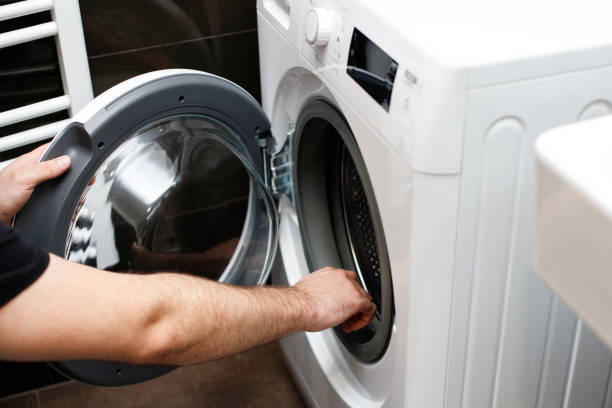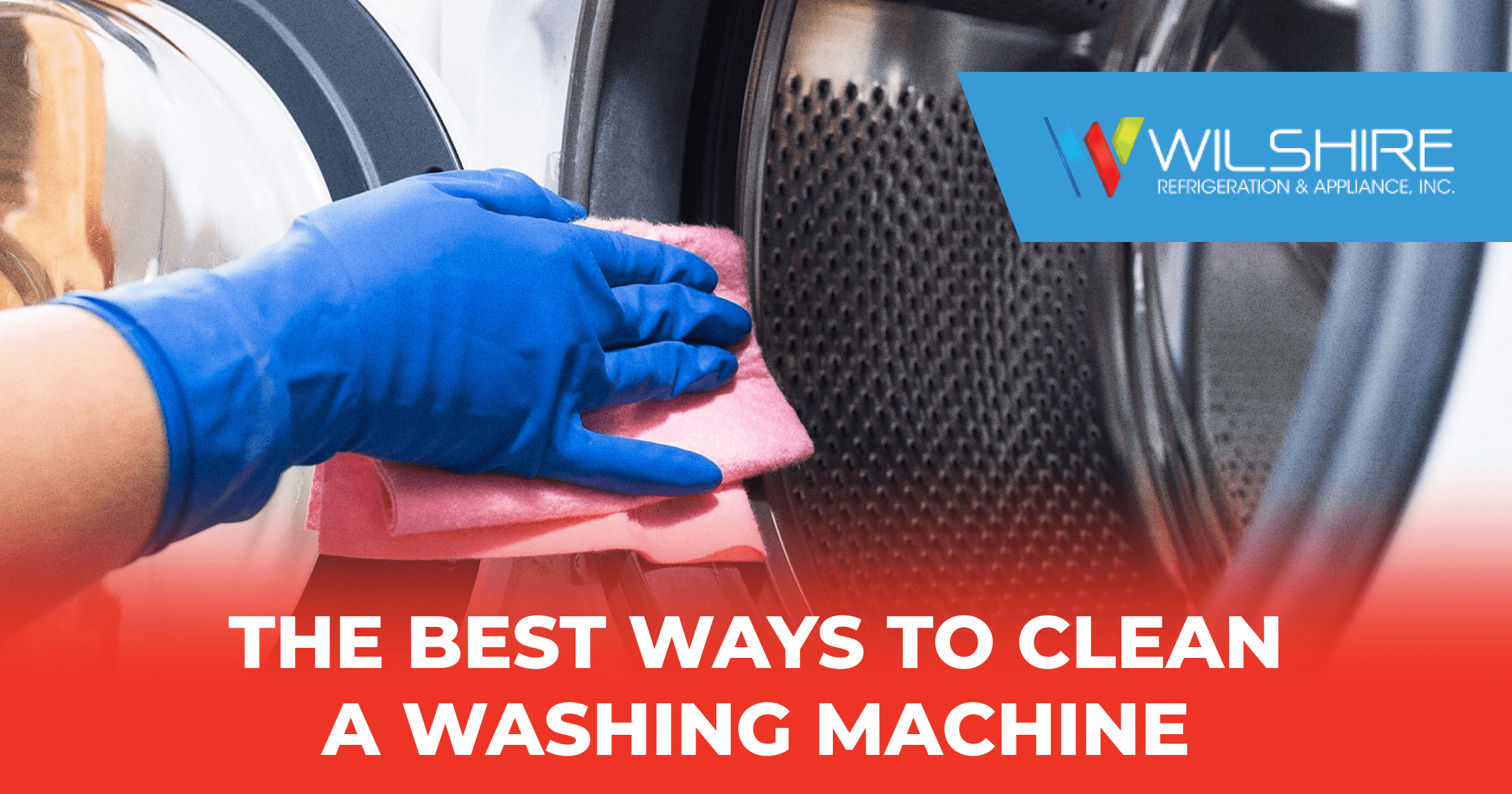A malfunctioning dryer can be a frustrating household appliance issue. One of the most common problems is when the dryer stopped spinning. This can lead to inefficient drying, excessive noise, and potential damage to your clothes.
In this blog post, we’ll explore the common reasons why your dryer might have stopped spinning and provide solutions to get it back up and running.
Dryer Heats but Doesn’t Spin
- Belt Issues: A worn, broken, or loose belt can prevent the dryer drum from spinning. It’s the crucial component that connects the motor to the drum, allowing it to rotate. If the belt is damaged, the motor can run without causing the drum to turn.
- Drum Bearing Problems: Damaged or worn bearings can cause the drum to make noise and stop spinning. These bearings are located within the drum and help it rotate smoothly. If they are damaged, the drum may become misaligned or experience excessive friction, preventing it from spinning.
- Motor Malfunction: Overheating or electrical failure can lead to motor issues, preventing the drum from rotating. The motor is responsible for powering the dryer’s drum. If it is malfunctioning, it won’t be able to provide the necessary energy to spin the drum.
Dryer Spins but No Heat
- Thermostat Malfunction: A faulty thermostat can prevent the heating element from turning on. The thermostat is a safety device that regulates the temperature of the dryer. If it malfunctions, it may prevent the heating element from turning on, even if the dryer is set to a high heat setting.
- Heating Element Problems: A damaged or burned-out heating element will not generate heat. The heating element is the component responsible for generating heat in the dryer. If it is damaged or defective, it won’t be able to heat the clothes.
- Gas Supply Issues: Insufficient gas supply can hinder the dryer’s heating function. If your dryer is gas-powered and there is not enough gas supply, it won’t be able to heat the clothes. This can be caused by a variety of factors, such as a clogged gas line or a low gas pressure.
Dryer Turns On but Won’t Spin
- Drive Pulley Problems: A worn or damaged drive pulley can prevent the drum from rotating. The drive pulley is a component located on the motor shaft. It is responsible for transmitting power from the motor to the drive belt, which then spins the drum. If the drive pulley is damaged, it won’t be able to transmit power effectively, preventing the drum from spinning.
- Electrical Wiring Issues: Loose or damaged wiring can disrupt the dryer’s electrical supply. The dryer’s electrical wiring can become damaged due to a variety of factors, such as age, wear and tear, or exposure to moisture. If the wiring is damaged, it can prevent the dryer from receiving the necessary power to operate.
- Control Board Malfunction: A faulty control board can prevent the dryer from functioning properly. The control board is the “brain” of the dryer. It is responsible for controlling the various components of the dryer, including the motor, heating element, and thermostat. If the control board is damaged or defective, it can prevent the dryer from operating correctly.
Solutions
Belt Issues
- Replacing the Belt: If the belt is broken or worn, it needs to be replaced. Follow the manufacturer’s instructions or consult a repair manual for specific guidance. Replacing the belt involves removing the old belt, inspecting the pulleys for damage, and installing a new belt.
- Preventing Belt Wear: Avoid overloading the dryer, and ensure that clothes are not tangled. Regularly check the belt for signs of wear and tear. Overloading the dryer can put excessive strain on the belt, causing it to wear out prematurely. Tangled clothes can also cause the belt to slip or break.
Drum Bearing Problems
- Signs of Damage: Listen for unusual noises, such as grinding or squealing, coming from the dryer. If you notice these sounds, it’s likely a sign of drum bearing damage. Bearings are responsible for supporting the drum and allowing it to rotate smoothly. When bearings become damaged, they can create noise and friction, which can prevent the drum from spinning.
- Professional Repair or Replacement: Drum bearing replacement is a complex task that often requires professional assistance. A technician can assess the damage and determine whether the bearings can be repaired or need to be replaced. Repairing bearings may involve cleaning and lubricating them, while replacing them requires disassembling the dryer and removing the damaged bearings.
Motor Malfunction
- Troubleshooting: Check for loose connections, inspect the motor for signs of damage, and ensure that the motor is not overheating. Loose connections can prevent the motor from receiving the necessary power to operate. Inspect the motor for signs of damage, such as burn marks or corrosion. Overheating can be caused by a variety of factors, including a faulty thermostat or a blocked vent.
- Replacing the Motor: If the motor is damaged or beyond repair, it will need to be replaced. This is another task that is best left to a professional. Replacing a motor requires specialized tools and knowledge.
Thermostat Malfunction
- Testing the Thermostat: Use a multimeter to test the continuity of the thermostat. If it’s not working properly, it will need to be replaced. A multimeter is a tool used to measure electrical current. By testing the thermostat, you can determine if it is receiving and conducting electricity properly.
- Replacing the Thermostat: Replacing the thermostat is relatively straightforward and can often be done by a homeowner with basic electrical knowledge. However, if you are unsure about your electrical skills, it is best to consult a professional.
Heating Element Problems
- Checking the Heating Element: Use a multimeter to test the continuity of the heating element. If it’s damaged or burned out, it will need to be replaced. The heating element is the component responsible for generating heat in the dryer. If it is damaged, it won’t be able to heat the clothes.
- Replacing the Heating Element: Replacing the heating element is a relatively simple task that can be performed by most homeowners. However, it is important to follow the manufacturer’s instructions carefully and ensure that the new heating element is compatible with your dryer model.
Gas Supply Issues
- Ensuring Gas Supply: Check the gas supply line for any leaks or obstructions. If there are no issues with the gas supply, ensure that the gas valve is open. Leaks can be detected using a gas leak detector. Obstructions can be caused by debris or foreign objects in the gas line.
- Safety Precautions: When dealing with gas appliances, always follow safety guidelines and consult a professional if you have any doubts. Gas leaks can be dangerous and should be addressed immediately by a qualified technician.
Drive Pulley Problems
- Inspecting the Drive Pulley: Check the drive pulley for signs of wear, cracks, or damage. If the pulley is damaged, it will need to be replaced. The drive pulley is a component located on the motor shaft. It is responsible for transmitting power from the motor to the drive belt, which then spins the drum.
- Replacing the Drive Pulley: Replacing the drive pulley can be a relatively simple task, but it may require some mechanical skills. If you are unsure about your mechanical skills, it is best to consult a professional.
Electrical Wiring Issues
- Checking for Loose Wires: Inspect the electrical wiring inside the dryer for any loose or damaged connections. If you find any issues, tighten the connections or repair the damaged wiring. Loose connections can prevent the dryer from receiving the necessary power to operate. Damaged wiring can be a safety hazard and should be repaired immediately.
- Repairing or Replacing Damaged Wiring: If the wiring is severely damaged, it may need to be repaired or replaced. This is a task that should be handled by a qualified electrician. Electrical work can be dangerous and should only be performed by someone with the proper training and experience.
Control Board Malfunction
- Troubleshooting the Control Board: Check for any loose connections or visible damage to the control board. If there are no obvious issues, try resetting the control board by unplugging the dryer and waiting a few minutes before plugging it back in. A loose connection can prevent the control board from receiving the necessary power to operate. Resetting the control board can sometimes resolve minor software glitches.
- Replacing the Control Board: If troubleshooting doesn’t resolve the problem, the control board may need to be replaced. This is a more complex task that often requires professional assistance. Replacing the control board involves removing the old board and installing a new one. This is a task that should be performed by a qualified technician.
Professional Repair Service
Wilshire Refrigeration & Appliance is a reputable choice for microwave repair services in Southern California and Las Vegas. With over 40 years of experience and a focus on high-quality service, they have established themselves as a trusted provider for Sub-Zero, Wolf, Cove, and Asko appliances.
Final Thoughts
A dryer that stops spinning can be a frustrating inconvenience. By understanding the common causes and solutions, you can often resolve the issue yourself or determine when to seek professional help.
Remember to always follow safety guidelines when working on electrical or gas appliances. Regular maintenance, such as cleaning the lint trap and avoiding overloading the dryer, can also help prevent future problems.



